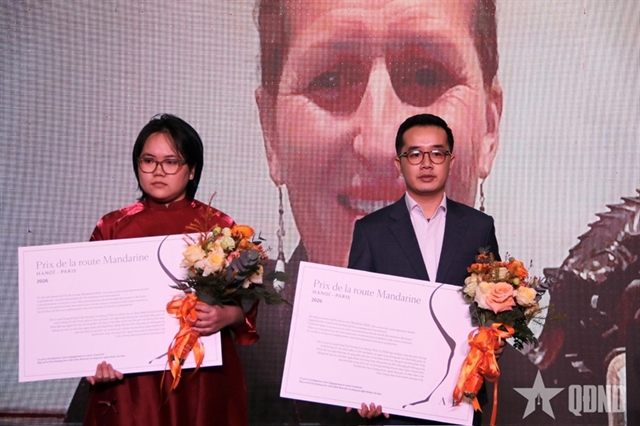 Society
Society

Late on March 6, the Hà Nội 115 Medical Emergency Centre received a call. Three workers were quickly scrambled and donned hazmat suits before setting off for Ba Đình District, sirens wailing.

|
| Medical workers from the Hà Nội 115 Medical Emergency Centre pick up a COVID-19 patient on Trúc Bạch Street on March 6. — VNA/VNS Photo Lâm Khánh |
HÀ NỘI — Late on March 6, the Hà Nội 115 Medical Emergency Centre received a call. Three workers were quickly scrambled and donned hazmat suits before setting off for Ba Đình District, sirens wailing.
There, on Trúc Bạch Street, the first patient in the second phase of Việt Nam’s fight against the COVID-19 pandemic – patient number 17 – had been reported. Their task was to deliver her to the National Hospital for Tropical Diseases.
While medical workers from the city's Centre of Disease Control (CDC) were sterilising the entire neighbourhood and conducting an epidemiological investigation, Quý and Liên entered her house, instructed the patient to take preventative measures and warned her to not speak during the trip to the hospital. The patient was developing a mild fever at the time.
That same night, two more people – her aunt and private driver – were also hospitalised. They later tested positive for the coronavirus (SARS-CoV-2), becoming patients 19 and 20.
The number of incoming calls received by the Hà Nội 115 Medical Emergency Centre witnessed a two-fold increase after the city reported its first case of COVID-19, Doctor Nguyễn Hữu Liên told Tiền Phong (Vanguard) newspaper.
They were answering up to 1,800 calls per day during the peak of the disease. Many of them were not medical emergencies, but requests for advice from people panicking over flu symptoms.
Amid the pandemic, medical workers from the centre also took charge of investigating callers’ epidemiological history. Those who had not been to disease-hit areas or in contact with reported patients were excluded from the risk list. In case of doubt, their cases were transferred to local medical facilities.
Each shift at the centre runs for 24 hours with three people ready to answer six telephones which can ring anytime. Some emergencies have taken them up to ten hours.
An estimated 40 per cent have been prank calls.
“We've got used to the nuisance,” said Liên. “The only thing we worry about is the lines being busy when there's a genuine call for help.”
Patients arriving at the centre are at high risk of infection, so it is crucial for medical workers to strictly follow protective protocols. After each ride, the ambulance is thoroughly disinfected with both chemicals and UV light.
There are four married couples working at the centre. All of them have sent their children to stay with their grandparents in the countryside. Schedules have been tight, and they have met their children only once or twice since Tết (Vietnamese Lunar New Year).
Doctor Liên said they were in need of testing because they had been exposed to the disease.
“We need to check our own health conditions so we can continue devoting ourselves to the community,” said Liên.
Nguyễn Văn Chánh, the centre’s deputy director who has 17 years of experiences in medical emergencies, said compared to other epidemics, including SARS, avian influenza H5N1 and influenza H1N1, COVID-19 was much more complicated and severe.
“Eat and sleep whenever you have time” has become their motto. Additional packs of bread and milk are being provided for the workers to “fill their stomachs during long shifts”, as Chánh put it.
Since medical workers cannot remove their hazmat suits while they are out on emergencies, Quý said it was better for them to eat and drink as little as possible.
When overseas Vietnamese nationals flocked back to the country and the centre’s medical workers were in charge of moving them to centralised quarantine camps, the whole team did not dare to eat anything except tiny bits of bread and water.
Trần Anh Thắng, the centre’s deputy director, said there was no longer any emergencies related to COVID-19 after nearly 20 days without a community transmission.
“It has given us space to breathe after an intense period when we battled to push back the disease, said Thắng. — VNS




